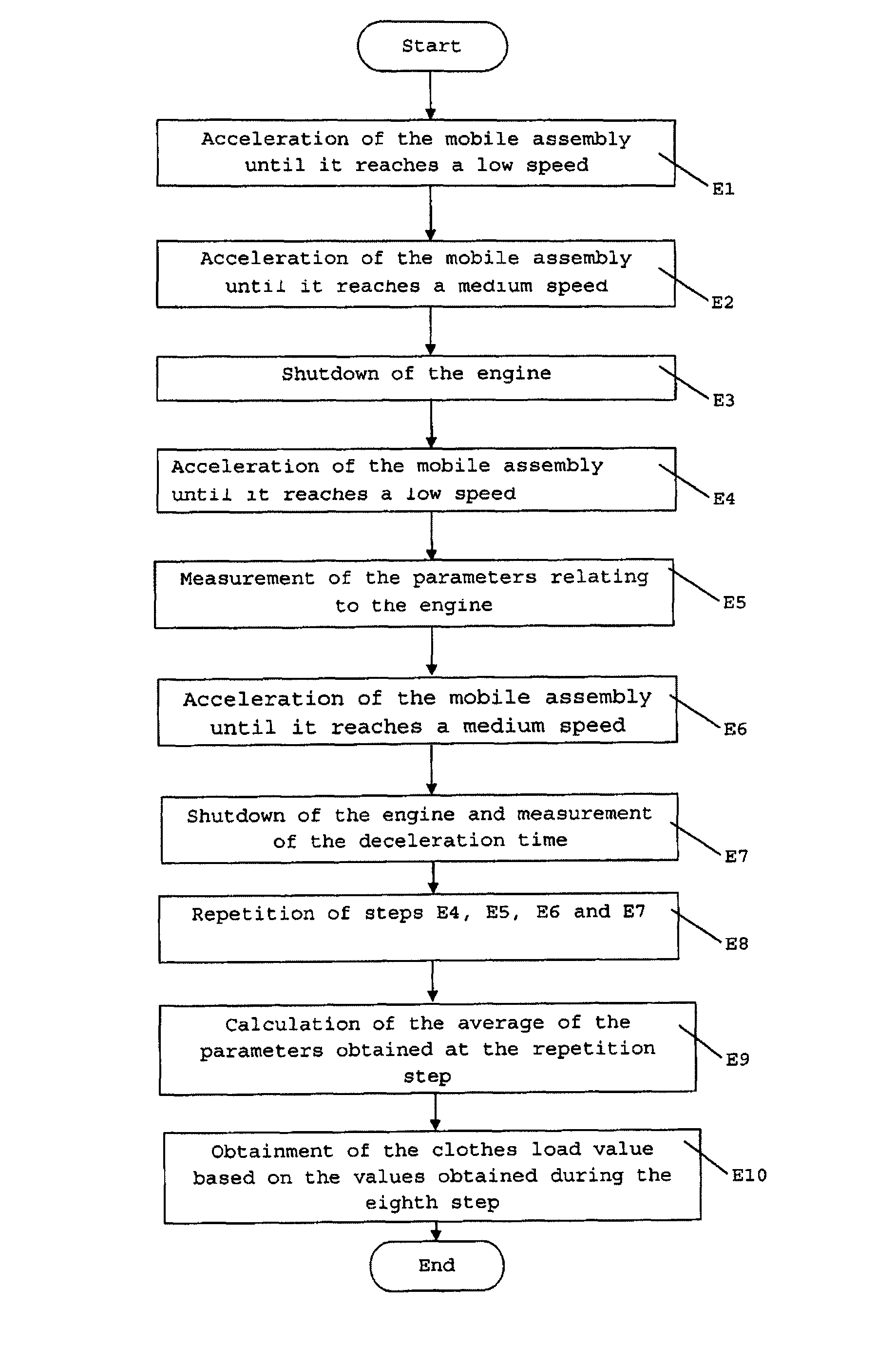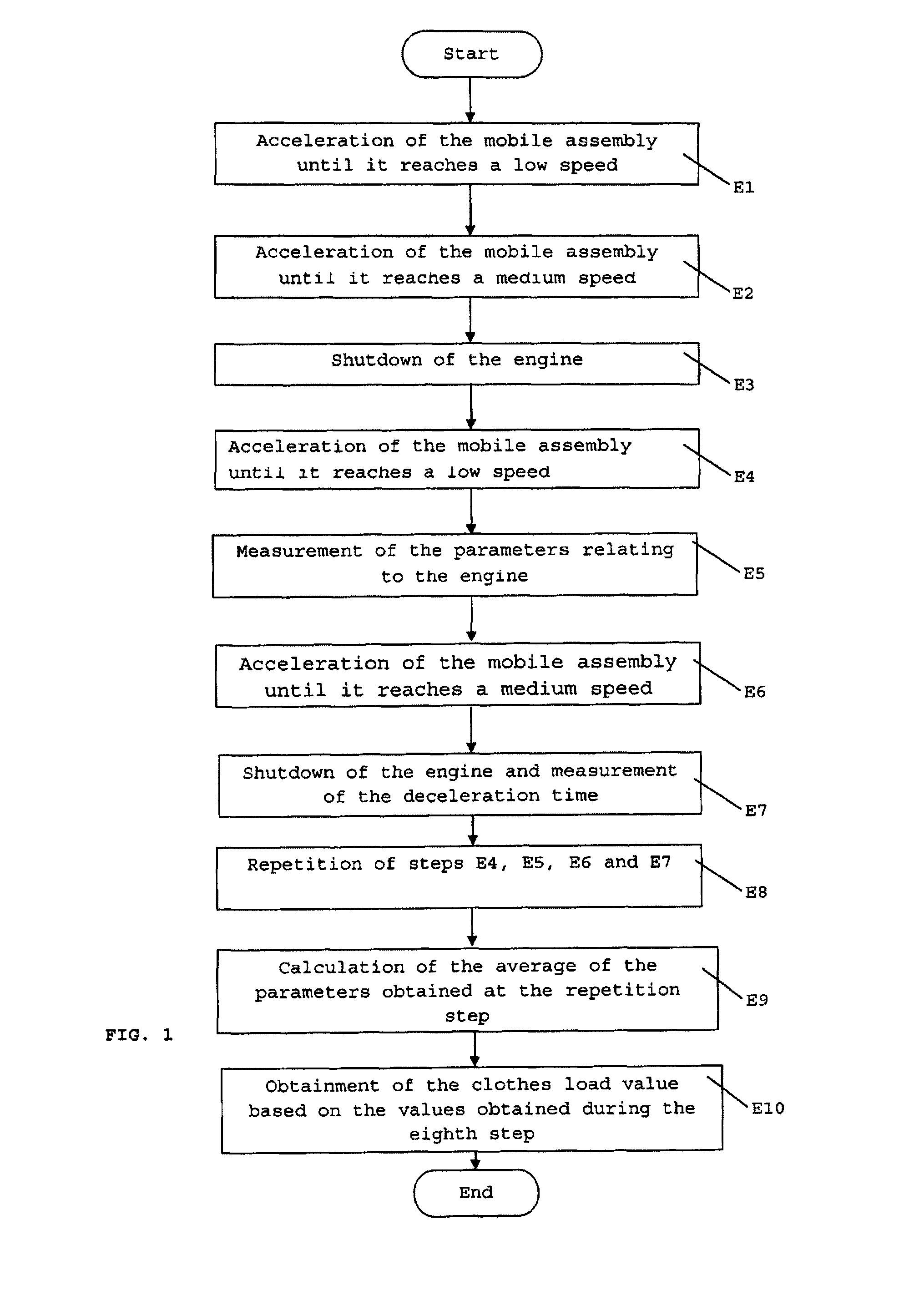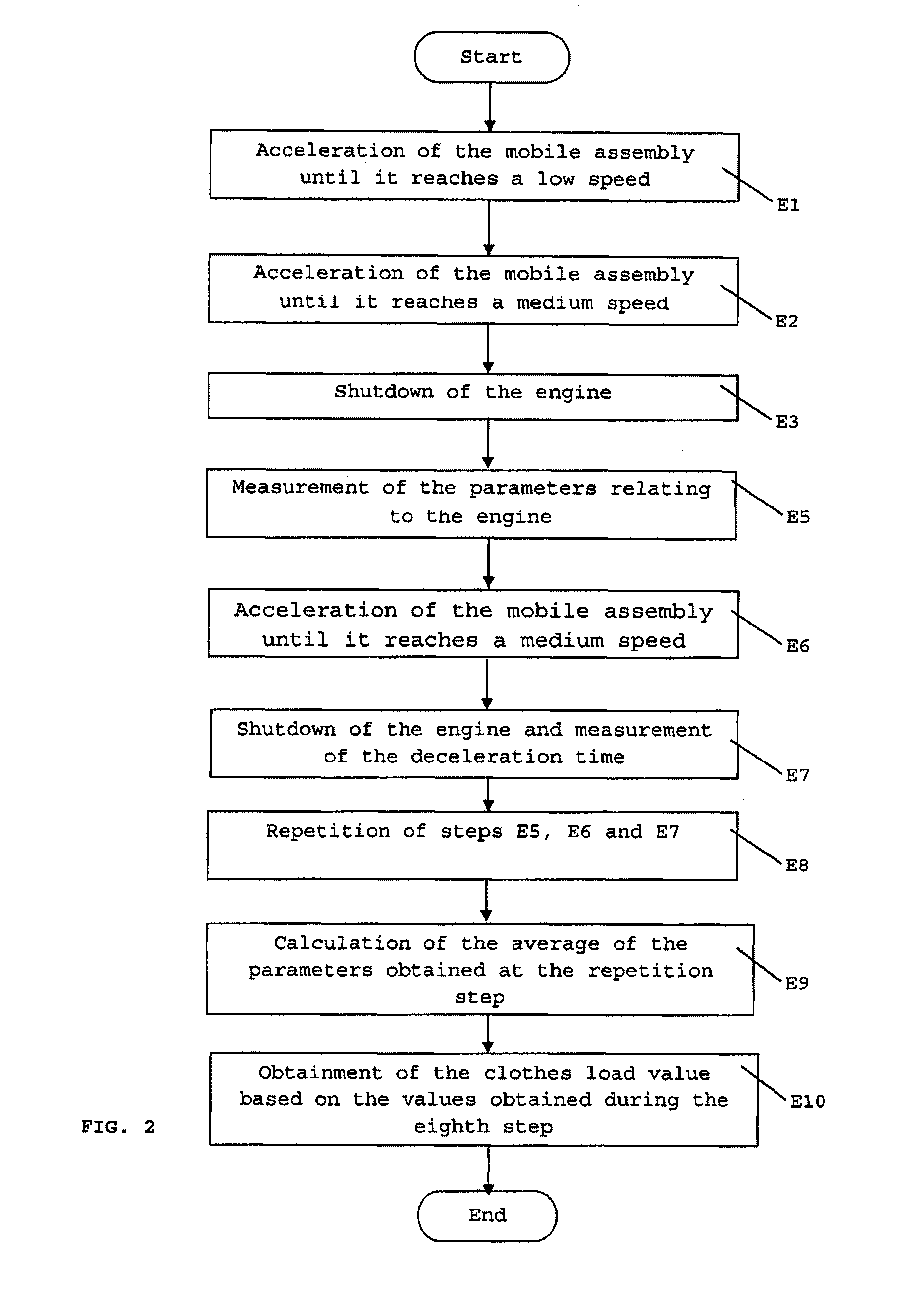Method for determining loads in clothes washing machines
a technology for determining loads and washing machines, applied in other washing machines, digital computer details, instruments, etc., can solve the problem of high implementation cost of this method
- Summary
- Abstract
- Description
- Claims
- Application Information
AI Technical Summary
Benefits of technology
Problems solved by technology
Method used
Image
Examples
first embodiment
[0043]Finally, as the final step, the method of the present invention uses the averages calculated during the previous step to measure the clothes load in the washing machine. For this tenth step E10 the present invention provides at least two possible embodiments. In a preferable first embodiment the load is determined from the application of the following empirical equation:
[0044]Load=α∑1nVn+b∑1nTmn+c∑1nTcn+d∑1nCn+e∑1nTdn
[0045]Where, V=Line voltage, Tm=Engine temperature, Tc=Control module temperature, C—engine current, Td=Deceleration time (time that the engine takes to stop after being turned off), n=number of repetitions of the seventh step and a, b, c, d, e are constants obtained empirically through the analysis of tests performed. More precisely, the parameters a, b, c, d, e are weights obtained through tests dictated by the statistical method “Design of Experiment (D.O.E.)”.
second embodiment
[0046]In a second embodiment the load is determined by the use of the average values in a neural network (FIG. 6). The neural network used in this invention has an input layer which comprises the following parameters measured in the previous steps: line voltage, engine temperature, engine control module temperature, sum of the engine current and deceleration time. Besides this the said neural network comprises at least one hidden layer and one output neuron. The weights and the linear coefficients were adjusted, subjecting the network to a set of training data obtained by executing the described algorithm in several clothes washing machines and several times in each machine.
[0047]Thus, the load determined by the method of the present invention can be applied to the washing machine's control system to adjust the water level.
[0048]As such, as you can see, the method of the present invention is simple and of low cost, achieving, therefore, the objectives that it proposes.
[0049]Finally,...
PUM
 Login to View More
Login to View More Abstract
Description
Claims
Application Information
 Login to View More
Login to View More - R&D
- Intellectual Property
- Life Sciences
- Materials
- Tech Scout
- Unparalleled Data Quality
- Higher Quality Content
- 60% Fewer Hallucinations
Browse by: Latest US Patents, China's latest patents, Technical Efficacy Thesaurus, Application Domain, Technology Topic, Popular Technical Reports.
© 2025 PatSnap. All rights reserved.Legal|Privacy policy|Modern Slavery Act Transparency Statement|Sitemap|About US| Contact US: help@patsnap.com



